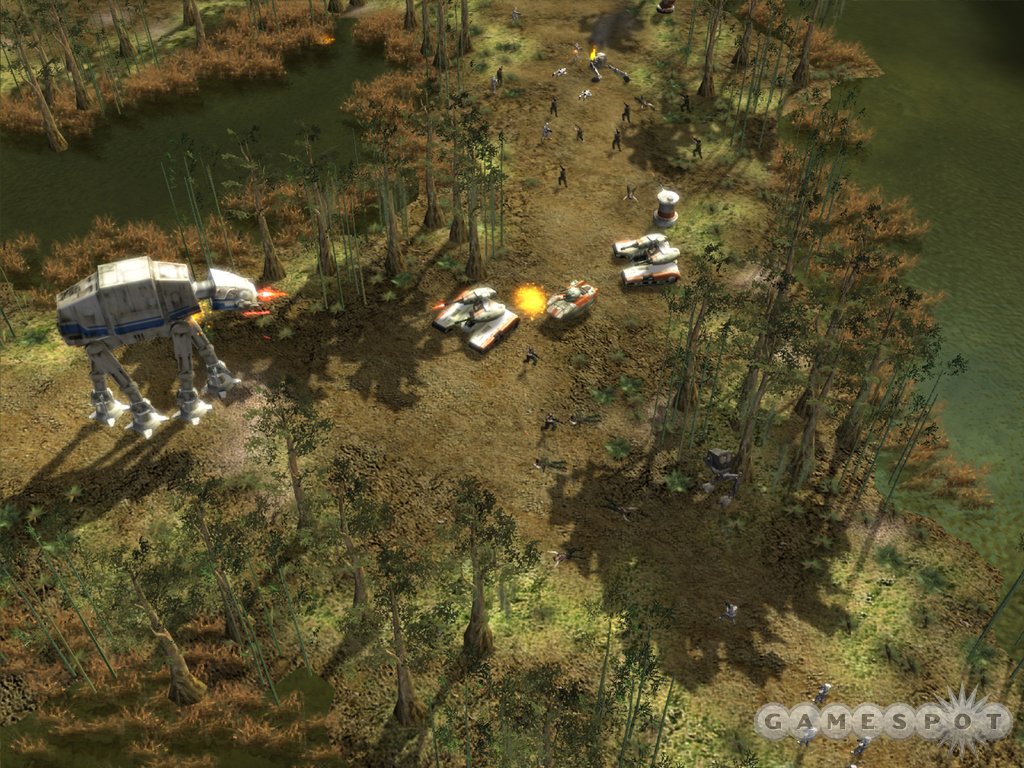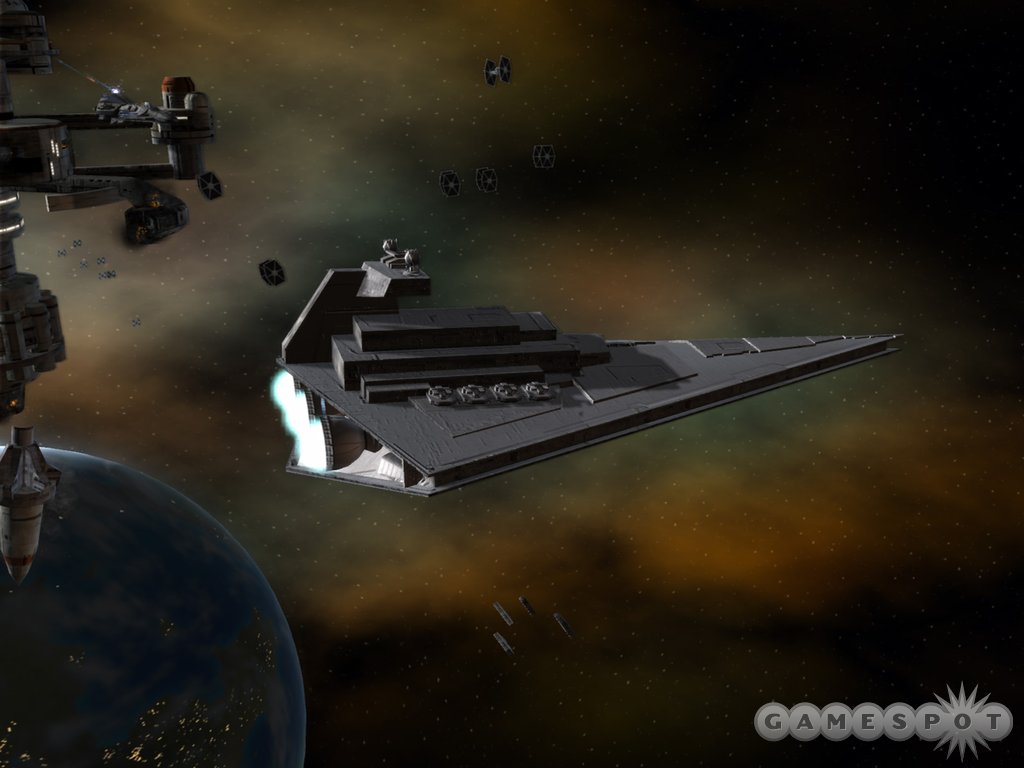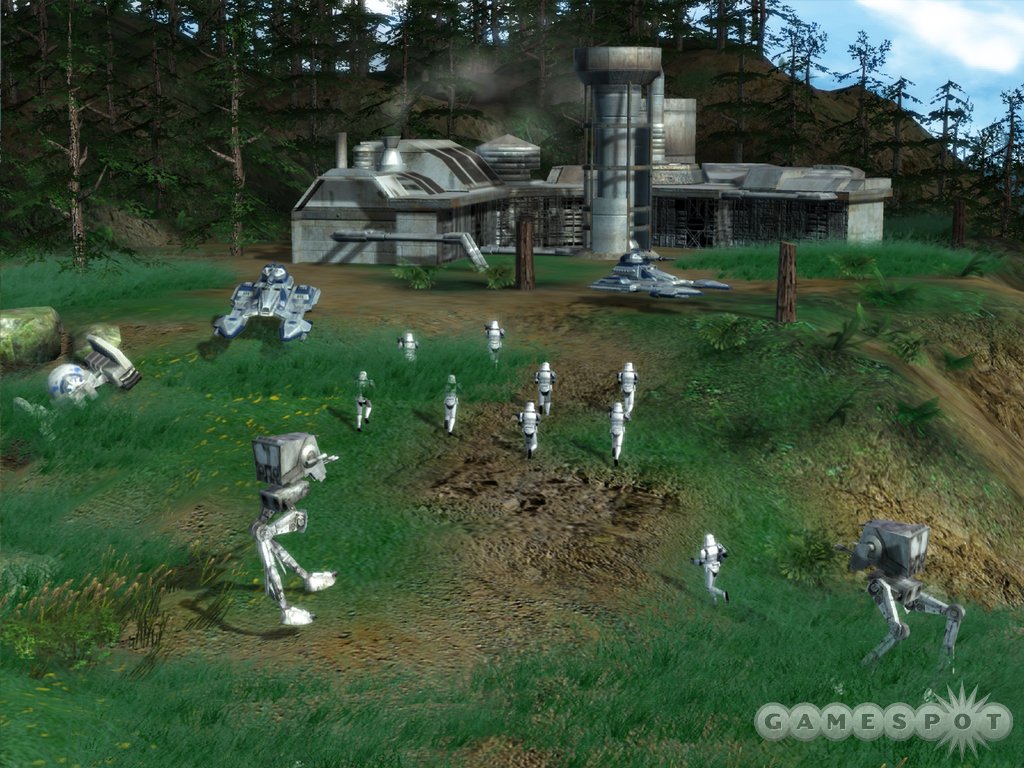Star Wars: Empire at War Updated Impressions - Single-Player, Combat, Resources, Preparing for E3
Get an exclusive update on this ambitious strategy game that will take place in the <i>Star Wars</i> universe.
The biggest event in the entire game industry is fast approaching, and before E3 gets here, we wanted to be sure to take an updated look at Star Wars: Empire at War. This ambitious strategy game from publisher LucasArts and developer Petroglyph (a Las Vegas studio composed of many members of the original Westwood Studios team that helped create the real-time strategy genre with Dune II and Command & Conquer) is looking better than ever. Join us now for exclusive new updates on the game's galactic map, combat strategies, and more details on how you'll be able to wage war on terra firma from space. At this year's E3 in May, LucasArts will also unveil more galactic map details as well as new information on hero units, including major heroes and minor heroes, who may join the Rebel Alliance or the Empire.

We were able to sit down with a skirmish map on the fertile soil of the doomed planet Alderaan, where Rebel forces were forced to defend themselves from an Imperial ground assault, complete with the huge walker armors first featured in The Empire Strikes Back. As it turns out, the general idea behind combat between the game's various units goes a step beyond rock-paper-scissors. Every unit in the game will have a "counterunit" that can defeat it easily (so there won't be any individual "superunits" you can churn out exclusively to win), but every unit in the game will also have a favored enemy unit it will be extremely effective against.
You'll see this represented onscreen; units firing on their favored enemies will kick up noticeably larger explosions--a clear visual cue that you're doing something right (or, if your units are getting hit by their counterunits, a clear cue that you need to change up your strategy quickly). These combinations should be largely intuitive; tanks crush infantry and artillery units decimate tanks, though there will be at least a few unique counterunit setups. For instance, the mighty Imperial walkers can be brought down by tying up their legs with cables from speeder ships, again, just like in The Empire Strikes Back. To give you a better sense of what works and what doesn't in battle, you'll be able to select a camera view that locks onto specific units and intelligently follows them into battle, focusing on both the units and the enemies they fight.
We then watched a later part of the mission on Alderaan, in which Rebel units were required to take a shielded city by storm. Unfortunately, the huge glowing energy shield outside the perimeter kept Rebel tanks--and fire--out of the city, while enemy forces were able to fire outward just fine. To get around the problem, the Rebel forces were brought around the perimeter to a guarded shield generator, which was walled in and guarded by heavy turrets. Rather than risk any more casualties, the Rebels simply called in a bombing run from space. Within seconds, a small squadron of Y-Wing bombers swooped down from the sky to deliver a devastating payload to the encampment, wiping out the generators, the turrets, and most of the walls.

Keep in mind that these bombing runs won't come from phantom ships that disappear into the ether. Empire at War is all about using your forces on the ground and in space, so if you don't have any Y-Wing bombers in your space fleet, you won't be able to perform that kind of bombing run. In space, just like on the ground, all troops will have counterunits, so you won't want to mass-produce just one type of ship, either. As we saw in a simulated battle above Geonosis, it may seem tempting to stock up on the huge, diamond-shaped Imperial star destroyers, especially since capital ships and space stations will have hard-point slots that you can equip with additional shield and weapon systems to pack a serious punch. However, your ships' hard points will be visible to the enemy (they actually appear onscreen on your ships) and can be targeted directly. Once your expensive destroyer's shield generator gets blasted, you'll watch that portion of the ship crumble off its hull in real time before enemy ships start pummeling you severely. As we've mentioned in our previous coverage of the game, space combat in Empire at War will be a bit like naval combat; larger ships can dish out more punishment, but they can't turn quickly to deliver repeated broadsides.
While the game's real-time battles will take place on land or in space, you'll do most of your strategizing using the game's galactic map, which will be a central planning screen that contains lots of useful and important information. For instance, the map will be where you'll keep track of your current missions, which will appear as incoming transmissions in windows that pop up onscreen. Your missions will include critical operations, like those given to you by Rebel officer Mon Mothma or by Emperor Palpatine himself, or side missions uncovered by your spies or offered by neutral characters, like besieged merchants looking for clear passage in pirate-infested space. This map will also be where you produce starships for your fleets and manage the planets under your control.
The galactic map will obviously show the entire galaxy, including all planets and most major Imperial outposts, since the Imperial forces are so large as to be impossible to hide. In a sense, planets will be the game's primary resource (so thankfully, you won't be chopping any wood). For starters, capturing and holding a planet nets you a steady stream of credits you can use to buy armies and upgrades. However, any given planet may also be the seat of enhanced production or technology, so it may be able to produce more armies or give you immediate access to advanced technologies you'd normally pay a fortune to research. You may even uncover a hidden cache of fighter ships or the home planet of a hero who will join your cause after you liberate it. Or, planets may be strategically placed in the galaxy as choke points.

The idea behind the galactic map and the game's missions is to create a "living, breathing" world in which you'll be able to make some revisions to classic Star Wars history. LucasArts producer Brett Tosti emphasizes that the galactic map will look "inviting," rather than static and sterile as the strategic maps in some other strategy games have looked. "We hate those," confides Tosti. Fortunately, the game will also have both tutorials and a "preamble game" to get new players familiar with strategic decisions, good or bad. From there, with shrewd planning, you may be able to do things like bring the state-of-the-art X-Wing fighter into battle much earlier than it was originally available in the Star Wars universe. You may even decisively crush the Rebellion (or the Empire) before that whole "I am your father" business even happened. Empire at War is scheduled for release later this year. Stay tuned to GameSpot for more details on this very promising strategy game.
Got a news tip or want to contact us directly? Email news@gamespot.com
Join the conversation